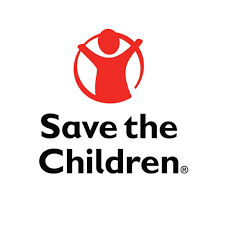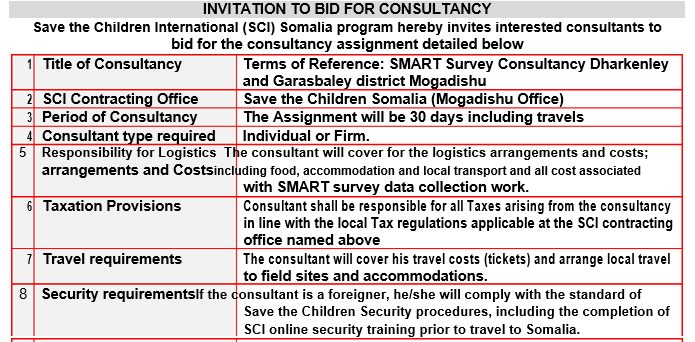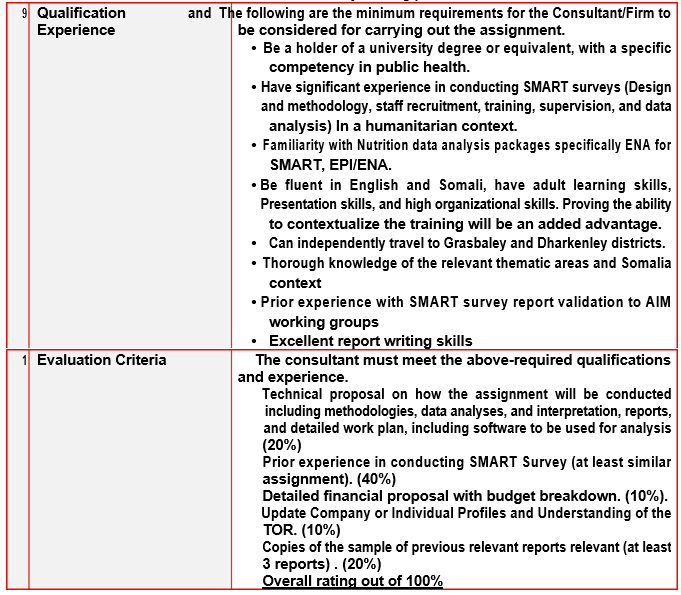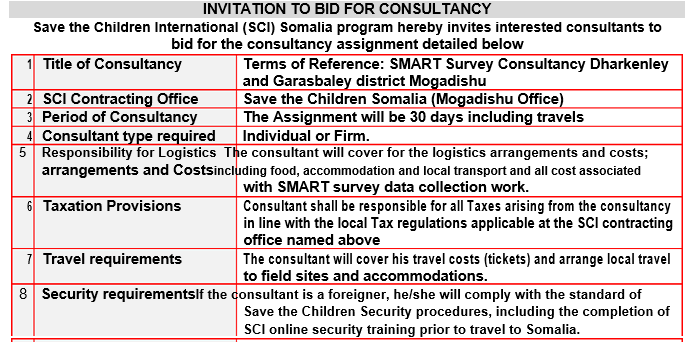Job Description
- BACKGROUND
Save the Children has worked in Somalia since 1951 when we set up a vocational school for orphaned boys in Somaliland. From the early 1970s we have provided emergency assistance when the needs demand. Each year, about 650,000 people benefit from our longer-term development work in Health, Nutrition, Water, Sanitation & Hygiene (WASH), Education, Food Security and Livelihoods (FSL), Child Protection and Child Rights Governance.
As malnutrition is a significant contributor to child morbidity and mortality, it is critical to have good quality, relevant and timely information to monitor conditions and programme implementation. Thus, the need for regular monitoring of the nutritional status of children supported by Save The Children is paramount to inform progress made to the donor and other relevant bodies. Save the children has been implementing integrated health and nutrition program-FFO project in Dharkenly/Garasbaley district from 2016 to date. According to FSNAU post GU 2022, Prevalence of high malnutrition GAM rate of 26.6% is reported in these IDPs. As a nutrition community, we need to continue to develop our understanding on practical solutions for the sustained collection, interpretation, analysis, and management of nutrition-related data for surveillance and monitoring of the nutrition situation and relevant nutrition programmes in the context droughts.
The current nutrition situation is likely to deteriorate between January- June 2023 for some population groups, mainly due to ongoing severe drought, and seasonal factors. These include severe drought, and high disease burden that is seasonally expected to worsen, low coverage of health and nutrition services, and expected deterioration in the overall food security situation linked to successive seasons of below-average rainfall including below-average 2022 Deyr. Specific factors include a likely increase in morbidity, further decline in milk availability and access, declining household cereal food stocks, a likely increase in cereal prices, reduced social support/ access to humanitarian assistance and heightened insurgent attacks.
Nutrition data and information in our operational areas are very critical to determine the nutritional status of children and PLWs that we support and the coverage that we Save the Children and its partners operate. While recognizing the risk of COVID-19 being transmitted during data collection of nutrition information, the surveillance and monitoring of nutrition programmes should continue where possible while exploring innovative approaches to collect vital information without causing any unintended harm and provide adequate and timely information for response planning. To conduct this SMART Survey, we will make sure following steps are in place and all IPC measures are applied by Save the Children team during this very critical time.
Overall Objective:
- Estimate Nutrition status of children <5, retrospective Mortality rate (CMR and U5MR) and factors influencing nutrition status of children.
- Specific objectives of the survey
Estimate prevalence of acute malnutrition among children 6-59 months.
Asses maternal Nutrition status of WCBA (15-49 years) and PLWs by using MUAC of <21cm
Estimate Retrospective CMR and U5MR
Estimate morbidity rates among children <5years for the past two weeks prior to the survey
Establish coverage of vitamin A and deworming among children under-fives? Estimate rates of handwashing during critical moments
Estimate EPI programme coverage specially measles and Polio through routine immunization, outreach and campaigns
Estimate key IYCF indicators ( EI, EBF,CBF,)
Estimate Key FSL indicators and HH level (HDD, Meal frequency and FCS) Draft actionable recommendations based on the findings.
Disability prevalence at HH level.
Geographic and Population Descriptions
- . Methodology
4.1 Sampling design and rationale
The survey will be a quantitative, cross sectional and descriptive by design. Standardized Monitoring and Assessment on Relief and Transition methodology (SMART) will be utilized in the assessment. The survey applies a two-stage cluster sampling
4.2 Sampling Plan
4.2.1. Sampling methods and Sample size calculation
Save the children assesses the Garasbaley IDPs and Adjacent hos communities based on accessibility, level of vulnerability, and random sampling methodology population. The study population will include the entire population in all selected survey areas. All (clusters/sampling units) in the selected population, which are accessible, secure, or not deserted, will be included in the sampling frame. The population estimates for the sampling units (villages) will be based on the UNFPA 2014 population census and CCM Detailed Site Assessments (DSA)
4.2.2. First stage sampling procedure: cluster selection
The first stage sample of clusters will be drawn independently from the master list of UNFPA 2014 sampling frame based on probability proportion to population size (PPS)1. Emergency Nutrition Assessment (ENA) software will be used for the calculation of the sample size. The lists of accessible villages/clusters inputted into ENA (January 11th , 2020 version) will provide the list of clusters per village for each livelihood zones, urban or IDP camps, and this will be shared with the Field Nutrition Analyst prior to field execution (training and data collection). This will involve the determination of number of children, households, and persons to be included in both anthropometric and mortality surveys.
4.2.3. Second stage sampling procedure: household selection
The second stage shall involve the selection of sample households within the sampled clusters. A household is defined as a group of people living under the same roof & sharing food from the same pot. In a home with multiple wives, those living and eating in different houses will be treated as separate HHs. Wives living in different houses and eating from the same pot will be considered as one HH.
The second stage of sampling consists of the selection of households within each cluster by using simple random sampling or a combination of segmentation. On arrival at the urban/IDPs or Rural /clusters, the survey team will introduce themselves and the objectives of the survey to the village or IDP/urban community leader. If the clusters correspond to a large population >250 HHs, they will be subdivided into segments of roughly the same number of people. One of these segments will then be chosen randomly, and households will randomly be selected by using the Simple random sampling or the random number generator in Smartphones, then the survey team visits these HHs. In collaboration with the IDP camp leaders/community guides or head of the section and the elders, the team will prepare a list of all households in the Rural/urban/IDP camp. In the selected cluster, the households will then be listed using the enumeration method and all the required households HHs to be surveyed will be selected from the list by using a random number table or random number generator. The supervisor will be responsible to verify the selection and number of households in the cluster. The sample size for the nutrition and mortality survey is calculated using the ENA software (January 11th, 2020. The assumptions for the sample size calculation are given below.
4.2.1. Sample size
sample size: the following parameters were used to calculate the sample size of Dharkenly/Garasbaley IDPs.
Skills and Qualifications
How to apply
Bidders are encouraged to apply via Ariba system. Please request the Ariba link via email sending your company profile and Business registration certificate/CV. Please address your request to apply via ProSave to [email protected]
Electronic Submission via Protected Email box (Optional)
Email should be addressed to [email protected]
Note – this is a sealed tender box which will not be opened until the tender has closed. Therefore, do not send
tender related questions to this email address as they will not be answered.
The subject of the email should be “PR241658- SMART Survey- Dharkenley & Garasbaley Mogadishu 2023
‘Bidder Name’, ‘Date’’.
All attached documents should be clearly labelled so it is clear to understand what each file relates to. Emails should not exceed 15mb – if the file sizes are large, please split the submission into two emails.
Do not copy other SCI email addresses into the email when you submit it as this will invalidate your bid.
Your bid must be received, no later than 11th Feb 2023
Bids must remain valid and open for consideration for a period of no less than 60 days







